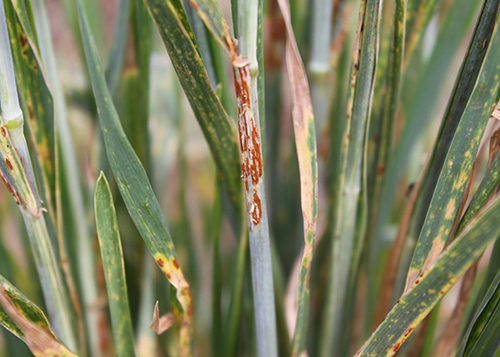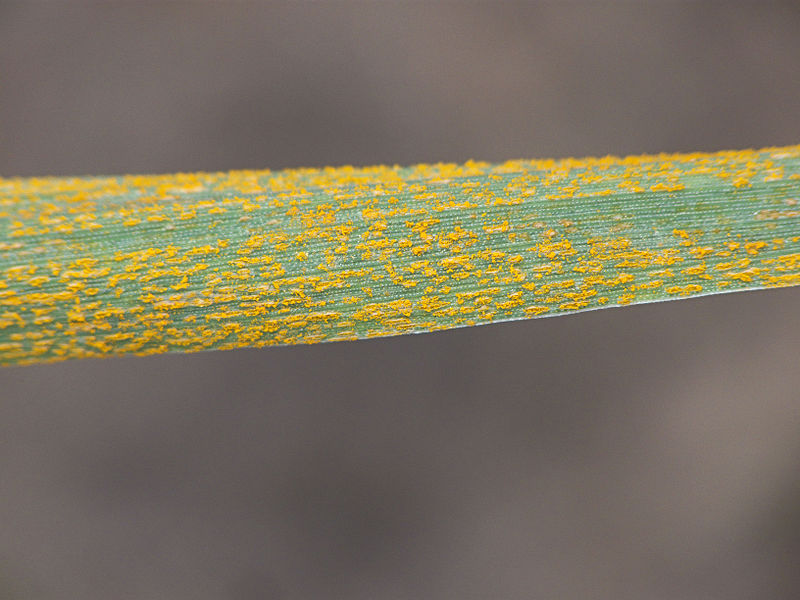Integrated Pest Management
Rust
Puccinia sp.
Hosts, Symptoms & Signs
- many types of grass are susceptible, including Kentucky bluegrass and perennial rye
- orange colored “dust” is seen on grass blades; the dust is orange spores that give the disease its name
- lawn that is stressed is more susceptible to the disease
- rust is more common in shaded and moist parts of the turf area
Disease Cycle
- spores are dispersed through air, mowing, shoes and animals
- the fungus is most active during temperatures of 70-85 degrees F
IPM Recommendations
- Rust is mainly a cosmetic problem. It will not kill the grass.
- Fertilize and irrigate as needed to avoid stress. Irrigate in the morning so the grass is dry overnight.
- Mow frequently and remove clippings to remove new infection early, but do not mow below the recommended height.
- Prune trees to increase light in heavily shaded areas and increase air movement to reduce humidity.
- Fungicides containing azoxystrobin can be applied but are often unnecessary.



